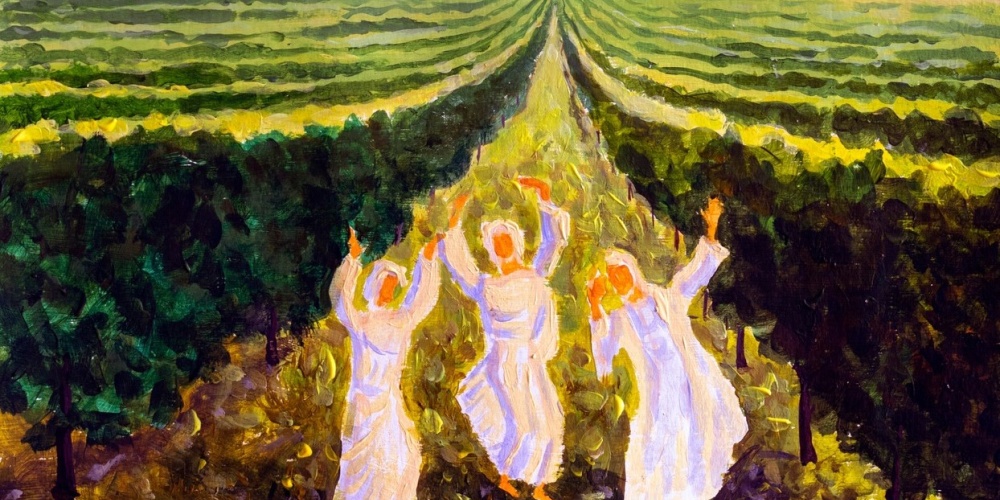
Our holidays form natural units, as none truly stand alone. The 49 days of the omer link Pesach to Shavuot. We begin the holiday cycle by celebrating our freedom from slavery, a prelude to service of G-d cemented at Sinai. Pesach, Shavuot and Sukkot form the shalosh regalim celebrating the journey from Egypt to Israel, and give thanks for the blessings of the agricultural cycle. Rosh Hashanah and Yom Kippur are the bookends of the aseret yemei teshuva. Shemini Atzeret, while “a holiday in its own right”, is linked to Sukkot – a day to rejoice after the intense High Holiday season. The Three Weeks link the 17th of Tammuz and Tisha B’Av as the national period of mourning intensifies, and the rabbinic holidays of Chanukah and Purim give thanks for times of historic salvation.
Living in the tragic aftermath of the Holocaust, we can add Yom Hashoah and Yom HaZicharon – the latter mourning the price of having a Jewish State, the former the price of not having one. On a much happier note, we are blessed to be able to celebrate the twin holidays of Yom Ha’atzmaut and Yom Yerushalayim.
Yet the above list is incomplete. The Mishna connects Yom Kippur, the holiest day of the year, to Tu B’Av, a holiday so obscure that the Gemara has to enquire as to why it is a holiday. Yet it is these two holidays – what today are the most observed and the most neglected[1] of all Jewish holidays – that are joined in joy. “Rabban Shimon ben Gamliel said: There were no days as joyous for the Jewish people as the fifteenth of Av and Yom Kippur, as on them the daughters of Jerusalem would go out in borrowed white clothes, so as not to embarrass one who did not have. And the daughters of Jerusalem would go out and dance in the vineyards. And what would they say? Young man, please lift up your eyes and see what you choose for yourself” (Taanit 26b).
As Yom Kippur is a day of forgiveness and atonement, it was clear to our Sages why it qualifies as one of the two happiest days of the year. But what is so special about its partner, Tu B’Av?
It stands to reason that if Yom Kippur is the happiest day of the year because it is a day of forgiveness and atonement, Tu B’Av is also the happiest day of the year because it, too, is a day of forgiveness and atonement. And it stands to reason that if Yom Kippur is the day of forgiveness for the 17th of Tammuz, Tu B’Av is the day of forgiveness for Tisha B’Av.
As to why we need two separate days of atonement, that is because there are two categories of sin. Yom Kippur atones for sins between man and G-d, whereas Tu B’Av is the day of atonement for sins between man and man. As is well known, Yom Kippur is unable to atone for sins between man and man. Only by asking forgiveness from those whom we have wronged can atonement be attained. G-d is unable to forgive on behalf of others[2].
On the 17th of Tammuz, the Jewish people built the golden calf, violating the cardinal sin of idolatry – and, at least metaphorically, adultery. And this a mere forty days after accepting the “Ten Commandments”, which begin with affirmation that there is but one G-d and we dare not worship any “others”. It is for good reason that G-d wanted to destroy the Jewish people and, if not for the prayers of Moshe, G-d would have done so. But after 80 days of prayer, G-d said: "Salachti kidvarecha[3], I forgive them as you have asked" (Bamidbar 14:20). Yom Kippur truly is the happiest day of the year. It is the day of reconciliation between man and G-d.
If Yom Kippur is the happiest day of the year, Tisha B’Av is the saddest…and its sins the worst. The Talmud (Yoma 9b) notes that the people of the First Temple period were guilty of the three cardinal sins of idolatry, adultery and murder. Those of the Second Temple were guilty of sina’at chinam, baseless hatred and apathy towards their fellow man, teaching that “the sin of sina’at chinam is equivalent to the three sins of idolatry, forbidden sexual relations and bloodshed”. Actually, the Talmud notes that it is worse. After all, the Second Temple was rebuilt within 70 years, but almost 2,000 years later, we are still waiting for the Third. So sad is Tisha B’Av meant to be that the Jewish people collectively sit shiva, mourning what our actions have wrought.
Rav Soloveitchik noted that one of the key purposes of shiva is teshuva. We may mourn the departed, but we must learn from them, and emulate the best of their qualities. The stories one hears about the deceased must inspire one and all to do and be better. Shiva forces one to face one’s own mortality, something that one surely hopes will spark the process of repentance.
If one begins shiva on the 9th of Av, the shiva ends on the 15th of Av. Tu B’Av is the day the Jewish people emerge from depths of sina’at chinam and are ready to reconcile with man. It, too, is the happiest day of the year.
We can now understand the six explanations that the Talmud gives as to why Tu B’Av is as joyous as Yom Kippur (Taanit 30b-31a). It was on Tu B’Av that the law forbidding one to marry a Jew from another tribe was lifted. Hard as it is to imagine, intra-marriage had been forbidden lest a woman’s inheritance be transferred to another tribe.
Furthermore, on Tu B’Av, the prohibition to marry those from the tribe of Binyamin[4] was lifted. Tu B’Av (and Yom Kippur) is the day of marriage, the day we express our love to one another, a day of ahavat chinam, the perfect response to the sina’at chinam of Tisha B’Av. Thus, our Sages teach that “whoever rejoices with a bridegroom and bride, it is as if they have rebuilt one of the ruins of Jerusalem” (Brachot 6b). Sina’at chinam destroyed our Temple and ahavat chinam will rebuild it.
The link between Tisha B’Av and Tu B’Av can be further seen as the Talmud explains that it was on Tu B’Av that the generation that left Egypt stopped dying in the desert. It was on Tisha B’Av that they accepted the majority report of the meraglim and their death in the desert was decreed. Some 750 years later on Tu B’Av, the roadblocks preventing Jews from going to Jerusalem were removed. It was Yeravam ben Nevat who both split the kingdom of Israel into two and prevented worship at the Temple.
The Gemara adds a fifth reason for Tu B’Av: that those massacred in Beitar during the Bar Kochva revolt were brought to burial – six days after they were killed on Tisha B’Av. Finally, Tu B’Av is the date after which trees no longer had to be cut down to provide the wood for the burning of the fire on the altar.
Yom Kippur and Tu B’Av are days on which we renew our relationship with G-d and man, flip sides of the same coin. Love of one’s spouse is meant to lead to love of G-d, and love of G-d must lead to love of those created in His image. And that is something we can all dance to.
[1] It borders on (or perhaps beyond) tragic that in a time when a greater percentage of people are single than ever before, this holiday is no longer properly observed – other than perhaps not saying tachanun. While the idea of single women dancing for single men would be considered sexist today (though clearly from the perspective of the Gemara there are no halachic issues involved), surely much, much more can be done to encourage people to meet (not to mention in an environment where wealth does not play a role). What an important initiative it would be to have large single events not only on Tu B’Av but on Yom Kippur. A few piyyutim less if need be, to allow more time to socialize, would be keeping in line with the Mishna’s understanding of Yom Kippur.
[2] It is this notion that explains why the Chafetz Chaim refused to forgive one who had hit him, not realizing he was the Chafetz Chaim. When pressed as to why, he explained that the person did not hit the Chafetz Chaim, but rather, he hit some old Jewish man. And for that, the Chafetz Chaim cannot grant forgiveness. It was this story that Simon Wiesenthal used to explain why we have no right to forgive the Nazis – only the ashes of the murdered could do so.
[3] In actual fact, these words were said by G-d in response to Moshe’s prayer to spare the people for the sin of the meraglim. Our Sages, however, have put these words at the beginning of the Yom Kippur service, brilliantly linking the two great sins of the generation that left Egypt, chet haegel and chet hameraglim.
[4] The prohibition on marriage to those from Binyamin was enacted due to the tragedy of pilegesh be-Givah and the civil war that ensued between the tribe of Binyamin and the other tribes. See sefer Shoftim chapters 19-21.



